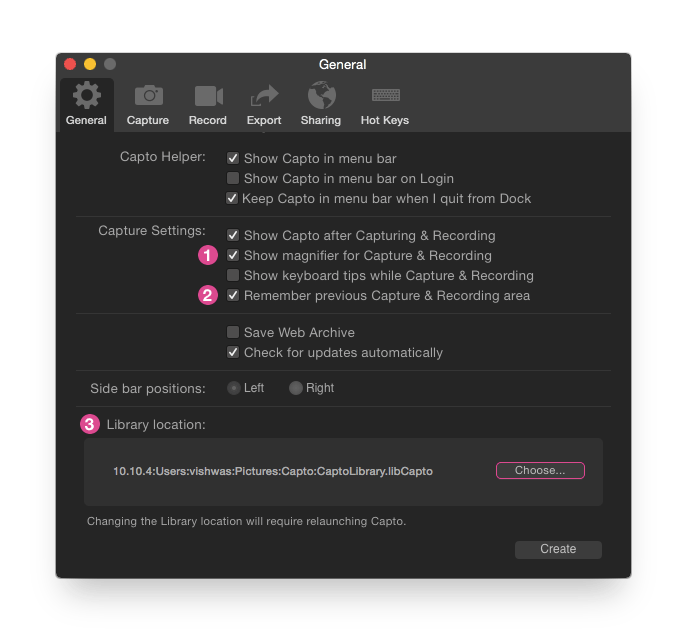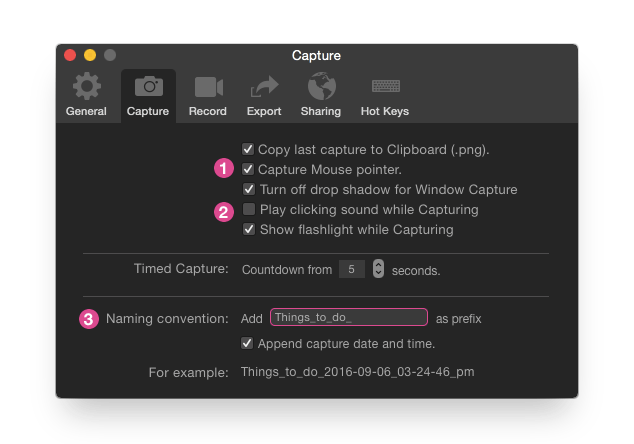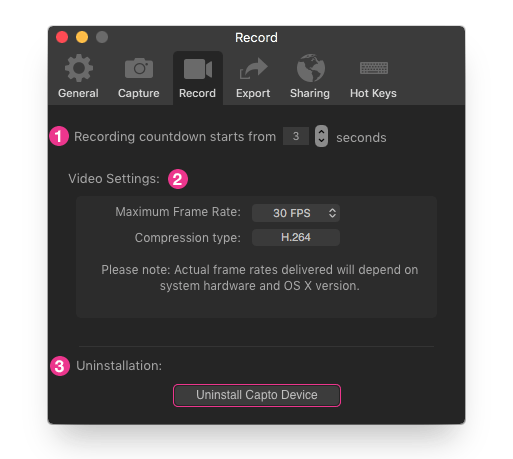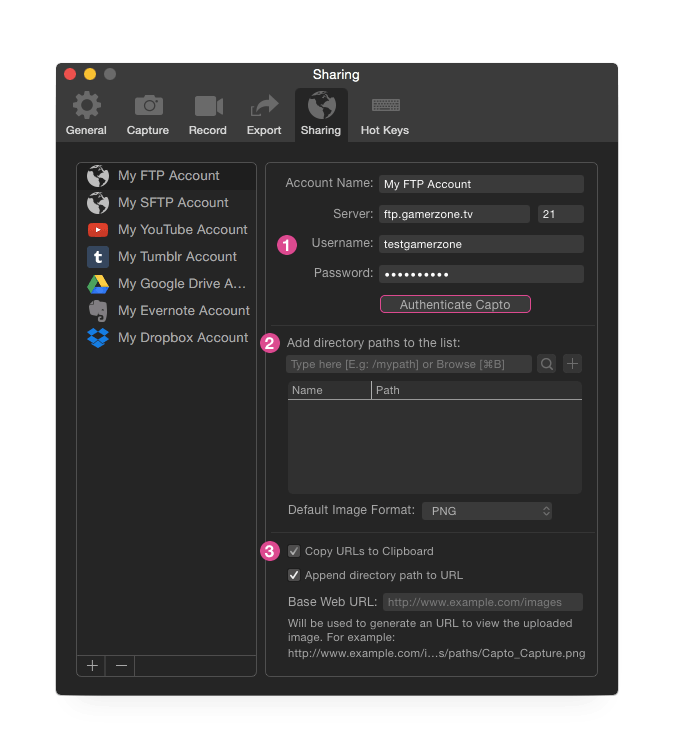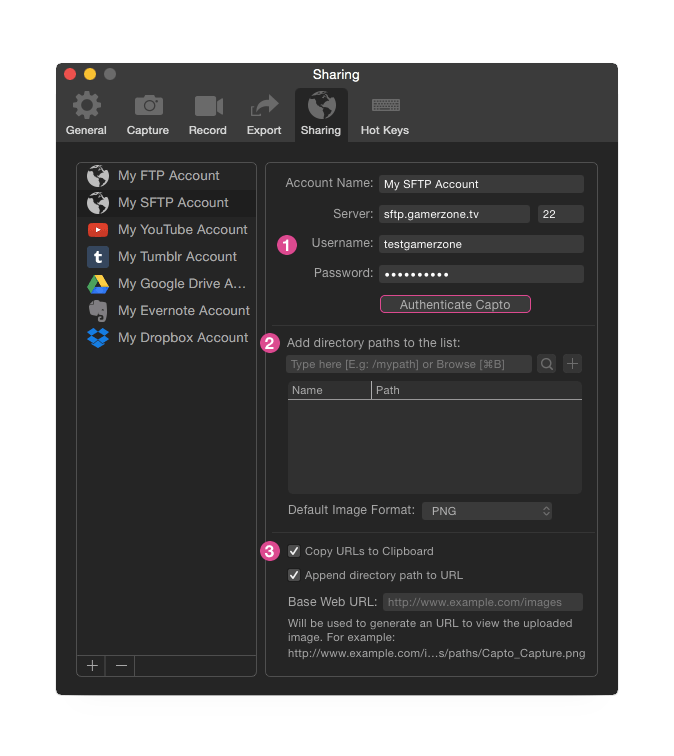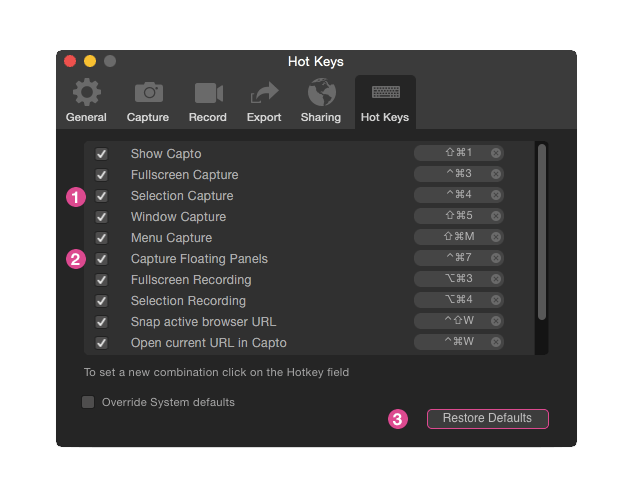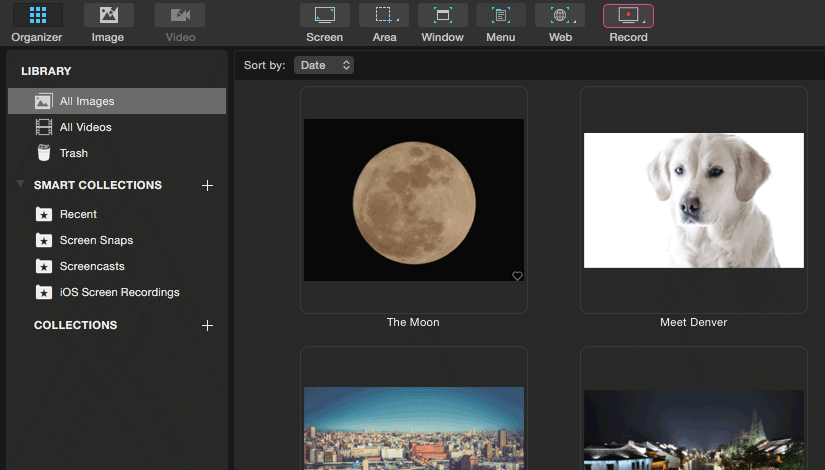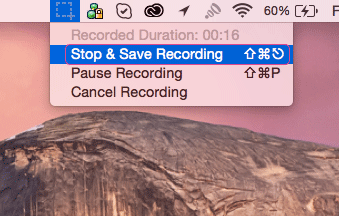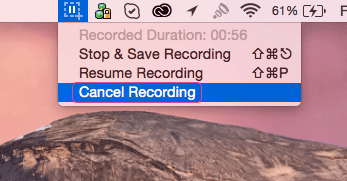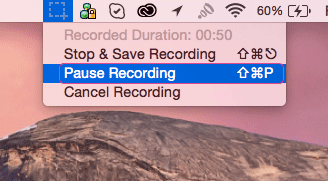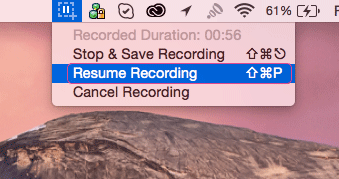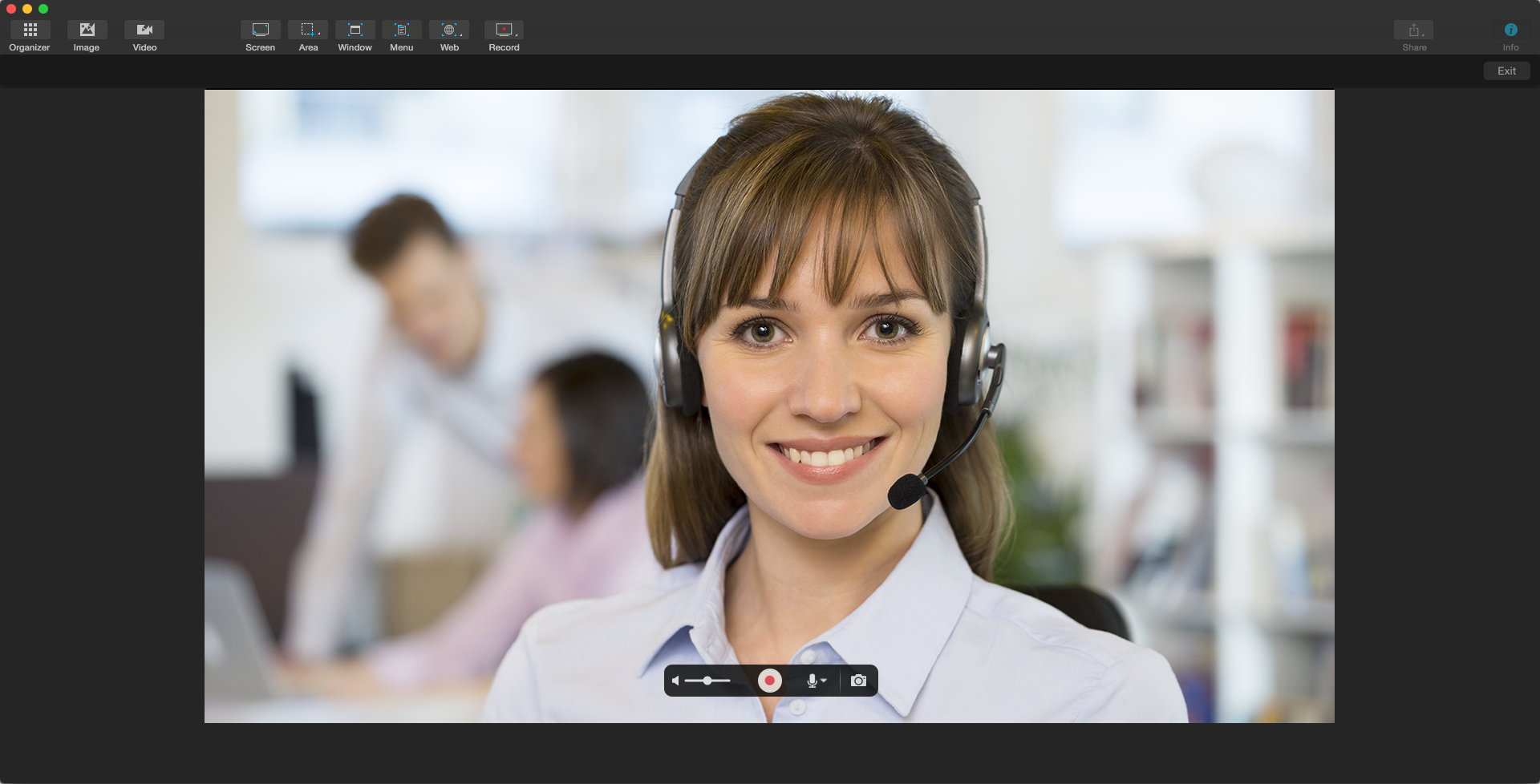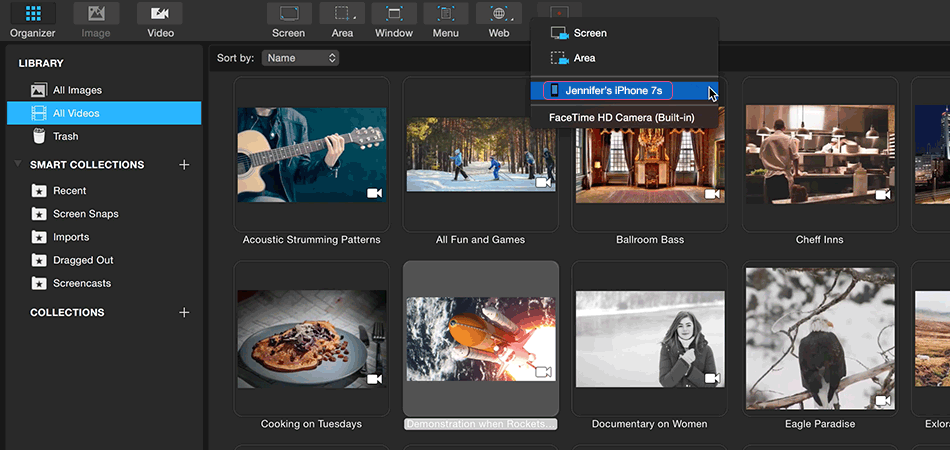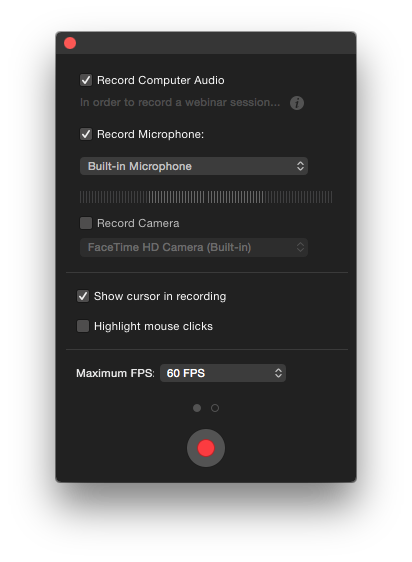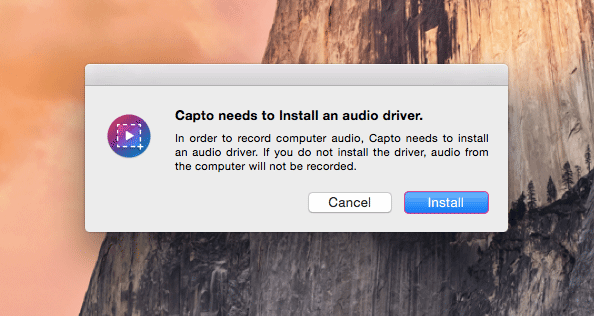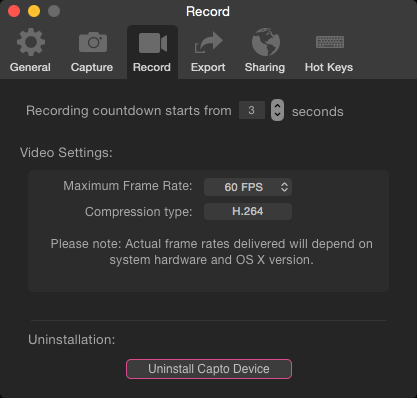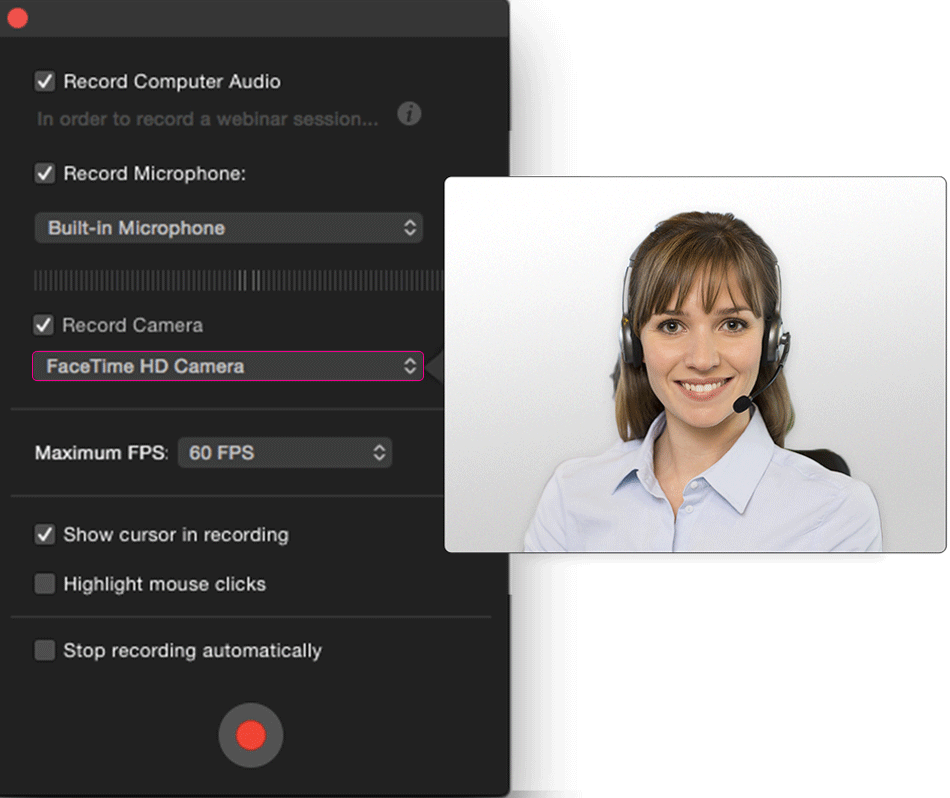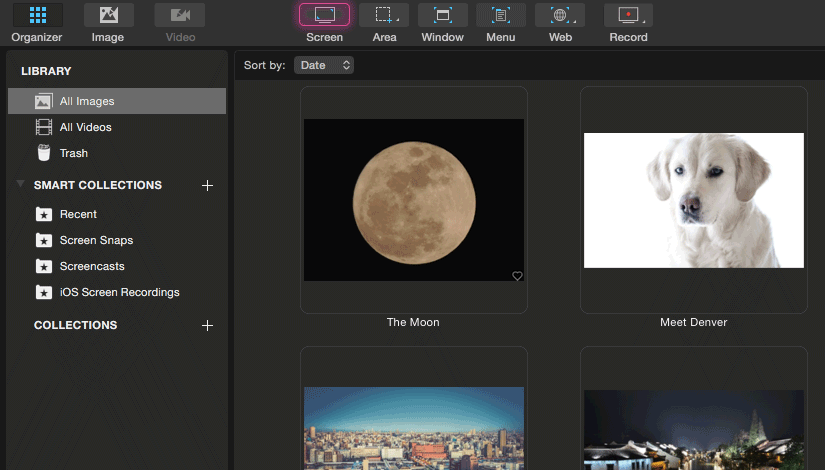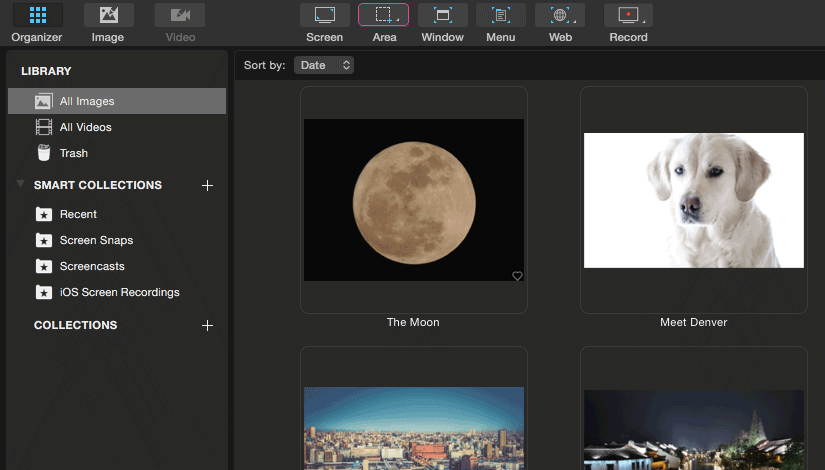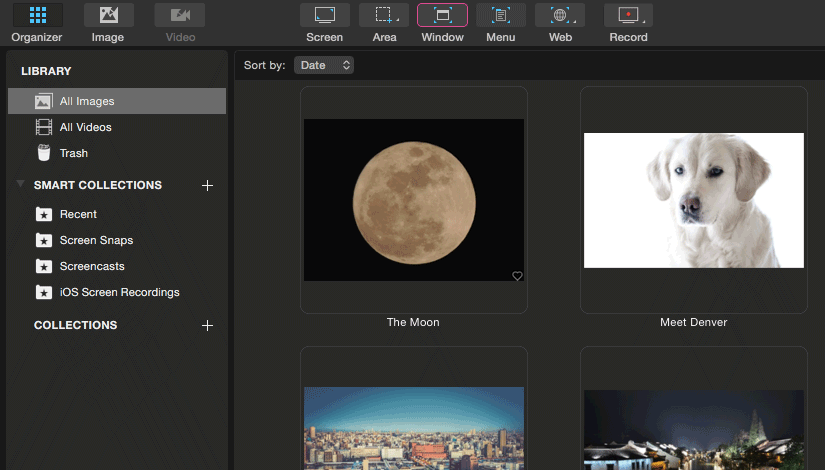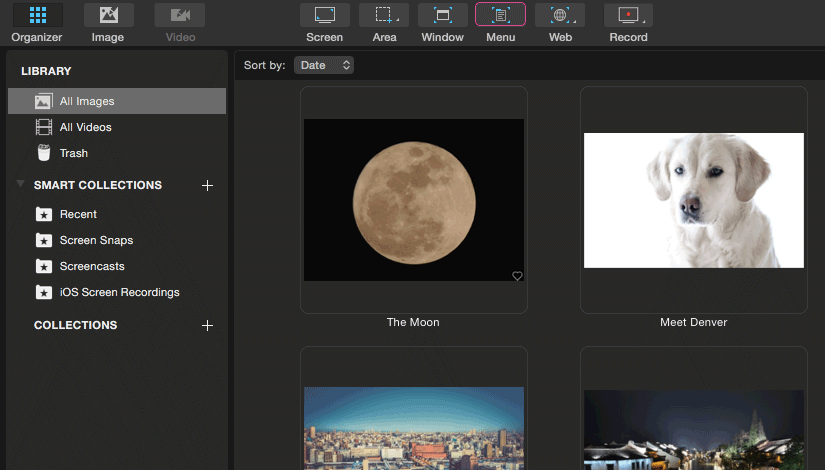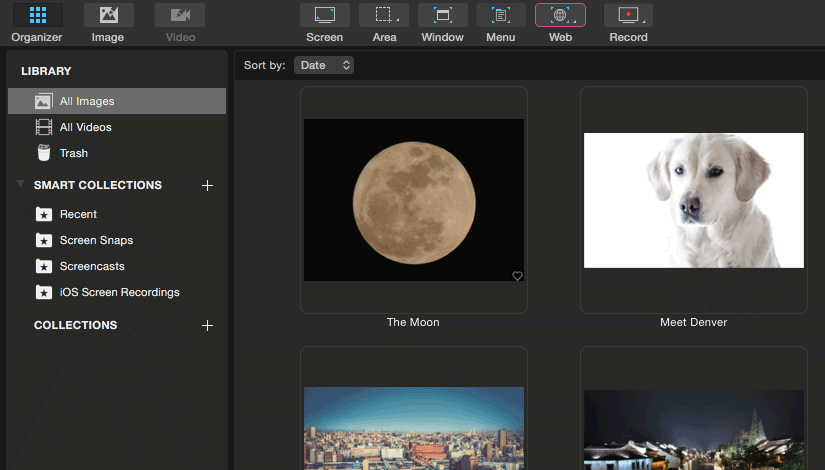You can share images using Dropbox, Evernote or Tumblr and videos using Dropbox, Evernote, Tumblr and YouTube, or you can publish them both to FTP/SFTP. Users can also share using the OS integrated Facebook, Twitter, Flicker, Vimeo, Messages and Airdrop settings. To use these OS X integrated sharing features, sign in to the respective services under System Preferences-> Internet Accounts.
FTP and SFTP:
Configuring FTP/SFTP account in Capto:
Capto allows you to directly upload images and videos to an FTP/SFTP server.
To configure the FTP server:
1. Select FTP/SFTP.
2. Enter the details and click ‘Authenticate Capto’. Once the details are verified, a Green tick mark is displayed adjacent to the button indicating that Capto is in sync with the FTP/SFTP account.
The FTP/SFTP configuration options are as follows:
1.
Account Name:
Enter a name for the account to identify it. The name entered here is displayed in the left pane.
2.
Server:
Enter the path to the directory in the FTP/SFTP server where the images and videos will be uploaded.
3.
Username:
Enter the username to log in to the FTP/SFTP server.
4.
Password:
Enter the login password for the account.
5.
Authenticate Capto:
Once you enter the details, click the ‘Authenticate Capto button to sync Capto with your FTP/SFTP account. Once the details are verified, a green tick mark is displayed adjacent to the button indicating that Capto is in sync with the FTP/SFTP account.
6.
Directory paths of folders:
You can add multiple folders within the same FTP/SFTP server for uploading images and videos. To set up a folder which accepts images and videos from Capto, click the ‘+’ button. From the folder browser sheet that is put up, select the folders where you want to upload the images and videos.
To delete an existing folder, select the folder and click the ‘-’ button.
7.
Default Image Format:
This drop-down allows you to select the default format in which the images are published to FTP/SFTP. The image formats available are:
a. PNG
b. JPG
c. TIFF d. PDF e. GIF f. BMP
PNG is the default format.
8.
Copy URL’s to clipboard:
If selected, this option copies the URL of the created link to the clipboard.
9.
Append Directory path to URL:
If checked, Capto will append individual directory paths to the base URL to generate a web address. If Unchecked, Capto won’t append anything and users get to manually specify the correct directory path in the base URL field.
10.
Base Web URL:
This is the publicly accessible location of the folder to which the files are uploaded. This is also used to generate a URL to view the uploaded file.
To create a new account for sharing using any of the supported services, click on the ‘+’ button on the bottom left of the sharing screen under Preferences > Sharing and select the desired service.
YouTube:
Capto should be validated with your YouTube account before you can upload images and videos. To configure a YouTube account:
1. Select ‘YouTube.
2. Provide the account name of the YouTube account in the ‘Account Name’ field under
‘Account Details’ section. The account name set here is reflected in the left pane.
3. On clicking ' Sign in', you should enter the login credentials in the window that opens up.
Click 'Authorize' once done.
4. You are now signed-in and all your files will be uploaded at the click of a button.
5. Under the ‘YouTube Preferences’ section, checking the ‘Copy URLs to Clipboard’ option copies the URLs of the uploaded images and videos to the Clipboard. For multiple uploads, it copies multiple URLs to the Clipboard. Also, the 'Open website after publishing' option loads the default browser and displays your content after uploading is complete.
Tumblr:
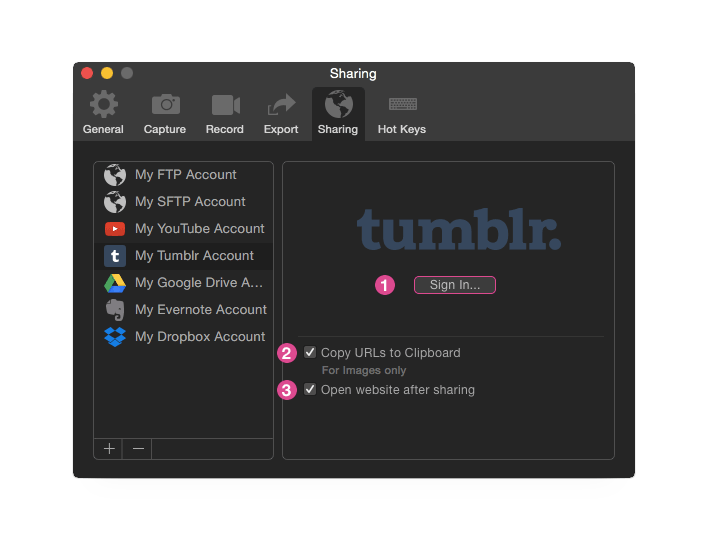 Capto should be validated with your Tumblr account before you can upload images and videos. To configure a Tumblr account:
Capto should be validated with your Tumblr account before you can upload images and videos. To configure a Tumblr account:
1. Select ‘Tumblr.
2. Provide the account name of the Tumblr account in the ‘Account Name’ field under ‘Account Details’ section. The account name set here is reflected in the left pane.
3. On clicking ' Sign in', you should enter the login credentials in the window that opens up. Click 'Authorize' once done.
4. You are now signed-in and all your files will be uploaded at the click of a button.
5. Under the ‘Tumblr Preferences’ section, checking the ‘Copy URLs to Clipboard’ option copies the URLs of the uploaded images and videos to the Clipboard. For multiple uploads, it copies multiple URLs to the Clipboard. Also, the 'Open website after publishing' option loads the default browser and displays your content after uploading is complete.
Google Drive:
 Capto should be validated with your Google Drive account before you can upload images and videos. To configure a Google Drive account:
Capto should be validated with your Google Drive account before you can upload images and videos. To configure a Google Drive account:
1. Select ‘Google Drive.
2. Provide the account name of the Google Drive account in the ‘Account Name’ field under ‘Account Details’ section. The account name set here is reflected in the left pane.
3. On clicking ' Sign in', you should enter the login credentials in the window that opens up. Click 'Authorize' once done.
4. You are now signed-in and all your files will be uploaded at the click of a button.
5. Under the ‘Google Drive Preferences’ section, checking the ‘Copy URLs to Clipboard’ option copies the URLs of the uploaded images and videos to the Clipboard. For multiple uploads, it copies multiple URLs to the Clipboard. Also, the 'Open website after publishing' option loads the default browser and displays your content after uploading is complete.
Evernote:
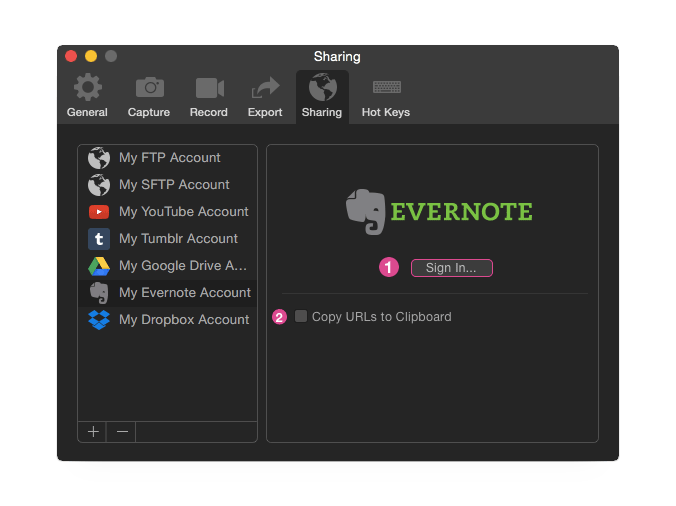 Capto should be validated with your Evernote account before you can upload images and videos. To configure a Evernote account:
Capto should be validated with your Evernote account before you can upload images and videos. To configure a Evernote account:
1. Select ‘Evernote’.
2. Provide the account name of the Evernote account in the ‘Account Name’ field under ‘Account Details’ section. The account name set here is reflected in the left pane.
3. On clicking ' Sign in', you should enter the login credentials in the window that opens up. Click 'Authorize' once done.
4. You are now signed-in and all your files will be uploaded at the click of a button.
5. Under the ‘Evernote Preferences’ section, checking the ‘Copy URLs to Clipboard’ option copies the URLs of the uploaded images and videos to the Clipboard. For multiple uploads, it copies multiple URLs to the Clipboard. Also, the 'Open website after publishing' option loads the default browser and displays your content after uploading is complete.
Dropbox:
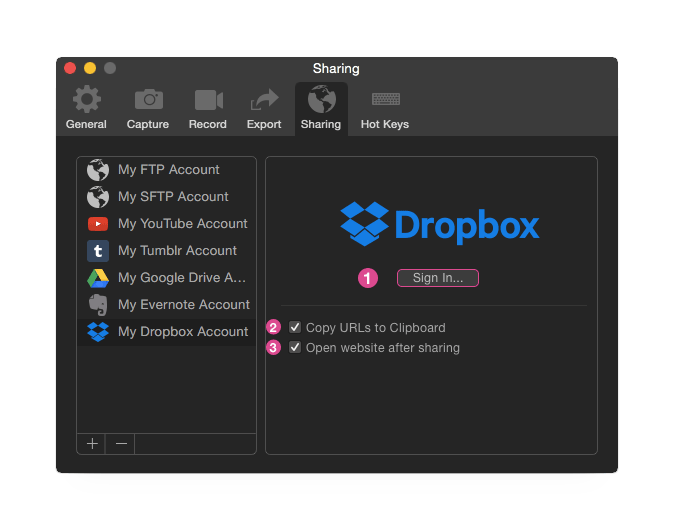 Capto should be validated with your Dropbox account before you can upload images and videos. To configure a Dropbox account:
Capto should be validated with your Dropbox account before you can upload images and videos. To configure a Dropbox account:
1. Select ‘Dropbox.
2. Provide the account name of the Dropbox account in the ‘Account Name’ field under ‘Account Details’ section. The account name set here is reflected in the left pane.
3. On clicking ' Sign in', you should enter the login credentials in the window that opens up. Click 'Authorize' once done.
4. You are now signed-in and all your files will be uploaded at the click of a button.
5. Under the ‘Dropbox Preferences’ section, checking the ‘Copy URLs to Clipboard’ option copies the URLs of the uploaded images and videos to the Clipboard. For multiple uploads, it copies multiple URLs to the Clipboard. Also, the 'Open website after publishing' option loads the default browser and displays your content after uploading is complete.











